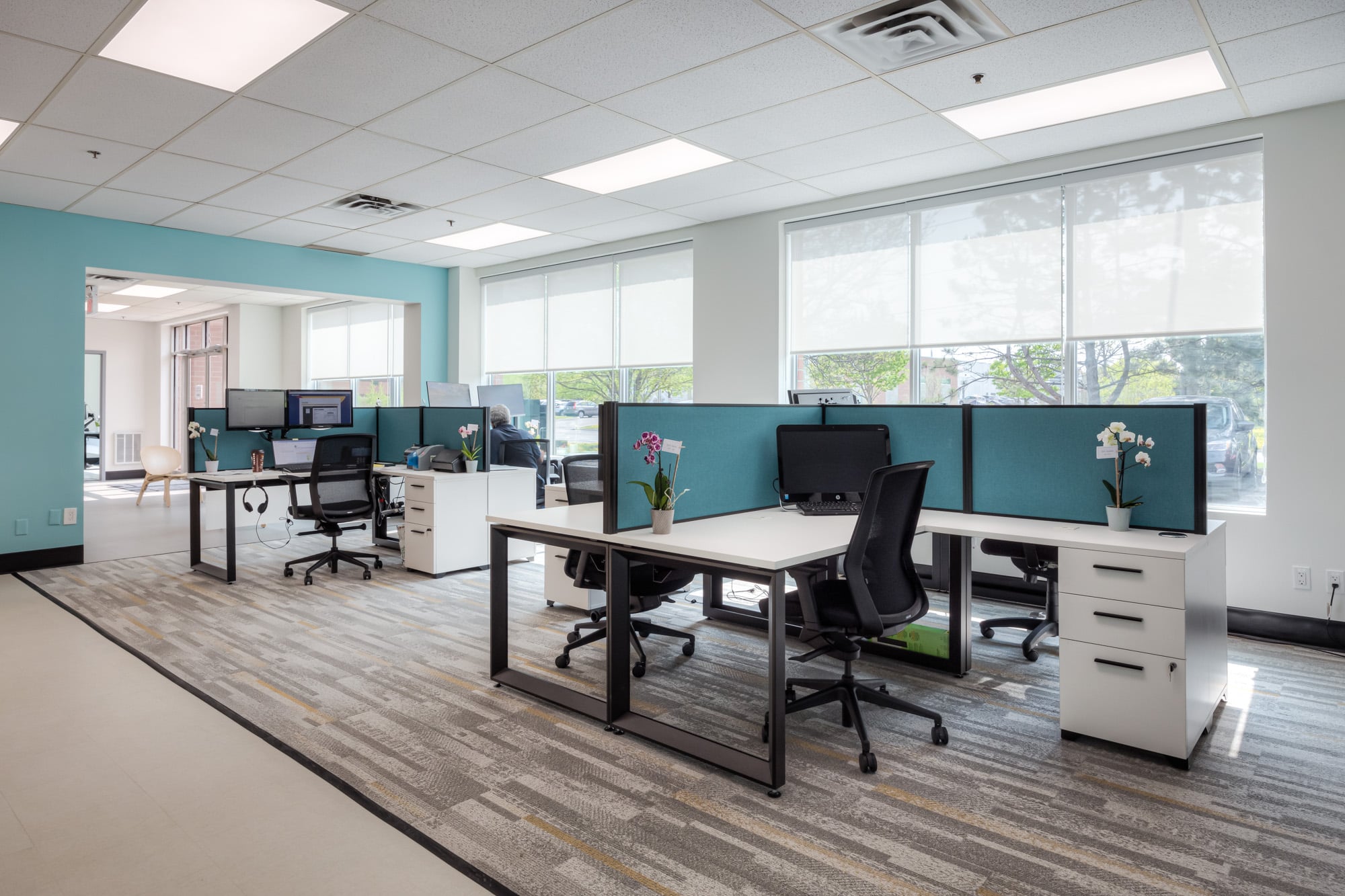In the ever-evolving landscape of the modern workplace, the focus on employee well-being has taken center stage. Recognizing that a healthy and supportive work environment directly contributes to overall job satisfaction and productivity, organizations are turning to interior design to create offices that prioritize the mental and physical wellness of their workforce. In this article, we’ll explore the integral role that interior design plays in enhancing employee well-being within the office setting.
Ergonomics for Physical Health:
One of the fundamental aspects of employee well-being is physical comfort, and interior design plays a crucial role in achieving this. Ergonomically designed furniture, adjustable desks, and supportive seating contribute to a workspace that minimizes the risk of discomfort and musculoskeletal issues. Thoughtful design choices in office furniture can alleviate strain on the body, fostering a healthier and more comfortable work environment.
Natural Light and Biophilic Design:
Exposure to natural light has been linked to improved mood, better sleep patterns, and increased productivity. Interior designers can strategically plan office layouts to maximize access to natural light, reducing reliance on artificial lighting. Additionally, the incorporation of biophilic design elements, such as indoor plants and natural materials, can create a connection to nature within the office environment, promoting a sense of well-being and reducing stress among employees.
Flexible and Adaptable Spaces:
The modern workplace is dynamic, and interior design can adapt to meet the changing needs of employees. Creating flexible and adaptable spaces allows individuals to choose environments that suit their work style and tasks. Whether it’s collaborative areas for team meetings or quiet zones for focused work, a well-designed office provides a variety of spaces that cater to different preferences and tasks, contributing to overall employee satisfaction.
Mindful Colour and Design Choices:
Colour psychology plays a significant role in influencing mood and energy levels. Interior designers carefully select colour palettes that promote a positive and calming atmosphere within the office. Soft blues and greens, for instance, are known for their calming effects, while pops of vibrant colours can inject energy into creative spaces. Mindful design choices extend beyond colour, encompassing elements such as artwork, layout, and overall aesthetics that contribute to a visually pleasing and inspiring workplace.
Acoustic Solutions for Focus:
Noise levels can impact concentration and stress levels among employees. Interior designers employ acoustic solutions to mitigate noise disruptions, creating a more conducive environment for focused work. This may include the use of sound-absorbing materials, strategic placement of furniture, and the incorporation of acoustic panels to create a balanced auditory experience within the office.
Employee Personalization and Empowerment:
Allowing employees to personalize their workspaces can have a positive impact on their well-being. Interior designers can collaborate with individuals to create personalized and empowering work environments. This may involve incorporating personal decor, adjustable furniture, or designated spaces that reflect individual work preferences, fostering a sense of ownership and comfort.
Inclusive and Accessible Design:
Well-being in the office extends to inclusivity and accessibility. Interior designers can implement designs that accommodate the diverse needs of employees, including those with mobility challenges or sensory sensitivities. Accessible furniture, thoughtfully designed layouts, and the consideration of various ergonomic needs contribute to a workplace that prioritizes the well-being of all employees.
As organizations increasingly recognize the importance of employee well-being, interior design emerges as a powerful tool in creating work environments that foster physical and mental health. From ergonomics and natural light to mindful design choices and adaptable spaces, interior designers play a pivotal role in shaping offices that contribute to the overall well-being and satisfaction of employees. In investing in the wellness of their workforce, organizations not only enhance productivity but also create a workplace culture that values and supports the health of its most valuable asset – its people.

